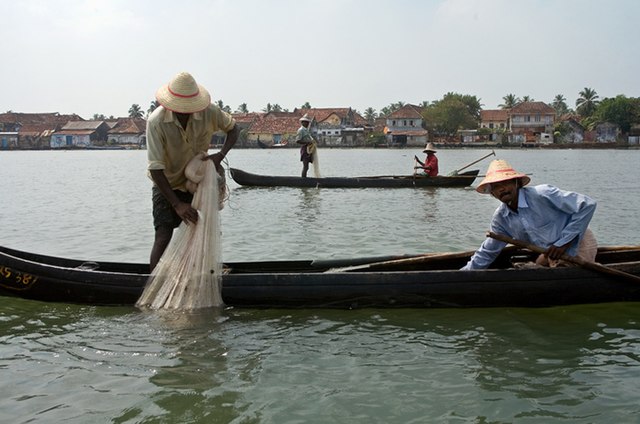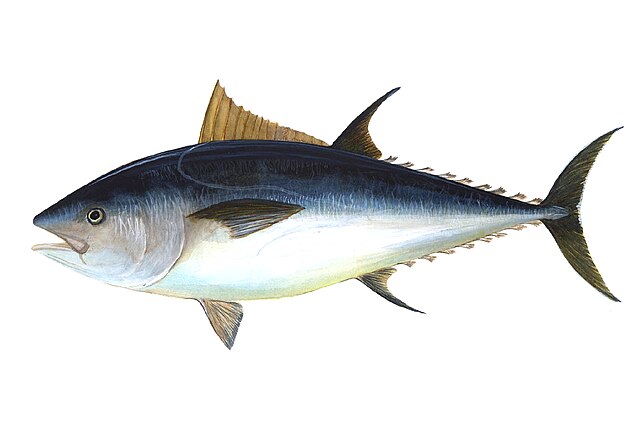The goal of fisheries management is to produce sustainable biological, environmental and socioeconomic benefits from renewable aquatic resources. Wild fisheries are classified as renewable when the organisms of interest produce an annual biological surplus that with judicious management can be harvested without reducing future productivity. Fishery management employs activities that protect fishery resources so sustainable exploitation is possible, drawing on fisheries science and possibly including the precautionary principle.
A signboard listing fishing regulations at Horton Creek, Arizona
Old, fat, female rockfish are the best producers.
Fishermen in the harbor of Kochi, India
Overexploitation, also called overharvesting, refers to harvesting a renewable resource to the point of diminishing returns. Continued overexploitation can lead to the destruction of the resource, as it will be unable to replenish. The term applies to natural resources such as water aquifers, grazing pastures and forests, wild medicinal plants, fish stocks and other wildlife.
Atlantic cod stocks were severely overexploited in the 1970s and 1980s, leading to their abrupt collapse in 1992.
When the giant flightless birds called moa were overexploited to the point of extinction, the giant Haast's eagle that preyed on them also became extinct.
Cows on Selsley Common. The tragedy of the commons is a useful parable for understanding how overexploitation can occur.
The Atlantic bluefin tuna is currently overexploited. Scientists say 7,500 tons annually is the sustainable limit, yet the fishing industry continue to harvest 60,000 tons.







